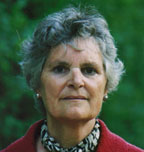
Seattle Post-Intelligencer, November 16, 1999
Europe Should Heed the Lesson from Kristallnacht
©1999 Valerie Kreutzer
On the night of November 9, 1938, Nazi party members torched and trashed most synagogues and Jewish businesses throughout Germany and Austria. Kristallnacht, as it was to be called, signaled the dramatic beginning of the Holocaust and should be remembered even in the odd year, because neo-Nazism and anti-foreigner sentiment are on the rise again all over Europe.
“Anti-immigration feelings erode traditional tolerance” in Sweden, according to one headline. In Russia, a court just banned activities of a prominent neo-Nazi group whose members sport swastika-like symbols and black uniforms and raise their hands in a Nazi-like salute. In neutral Switzerland, voters vented their anger against immigrants by electing a far-right party and leader. In Austria, similar anti-immigrant feelings gave a boost to right-wing Joerg Haider’s party.
For now, Germany is not on that list of countries swept by neo-Nazism and foreigner-phobia. Could it be that Germans have learned a few lessons from their past?
During a recent visit to Berlin, I felt encouraged by the number of memorial sites that confront Germany’s past amidst the new capital’s frenzy to construct its future.
The “Topography of Terror” exhibit not far from the bustling Marlene Dietrich Platz stretches along the ruins of the former Gestapo interrogation center. The panels present courageous men, women, Jews, socialists, communists, and Christians who opposed the Nazi regime. A Holocaust museum is planned to sit on the now vacant lot.
The House of the Wannsee Conference, an elegant villa by a lake in the suburbs, documents Hitler’s so-called “final solution”—the implementation of the decision to deport to the East and murder the Jews of Europe. On the day of my visit there, a group from the Bundeswehr, the German army, was led on a guided tour through the exhibit. “It will be good for them,” commented the cashier as he handed me my ticket.
The most outstanding memorial, however, is the golden dome of the New Synagogue on Oranienburger Strasse. Built in 1866 and destroyed by the Allies in 1943, the synagogue’s restored cupola graces the city’s skyline and documents in the rooms below the rich cultural and intellectual life of Germany’s Jewry before the war. One archival photo, for example, shows Albert Einstein playing violin concertos for an audience of 3,000 at a synagogue concert in 1930.
The archives also tell the story of Wilhelm Kruetzfeld, the police precinct chief, who confronted the Nazis intent on torching the New Synagogue during Kristallnacht. With drawn pistol Kruetzfeld forced them to leave and then called the fire brigade to extinguish the flames. In the aftermath of his intervention, Kruetzfeld was transferred and later opted for early retirement. A small plaque commemorates his courage; a police academy is named after him.
A larger plaque next to the synagogue’s entrance mandates: “… This house of God should for all times remain a place of admonition and remembrance. DON’T EVER FORGET!” An apt warning in the face of troubling trends.
